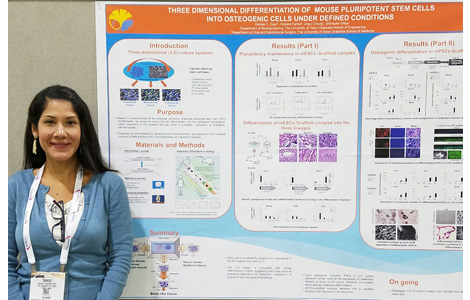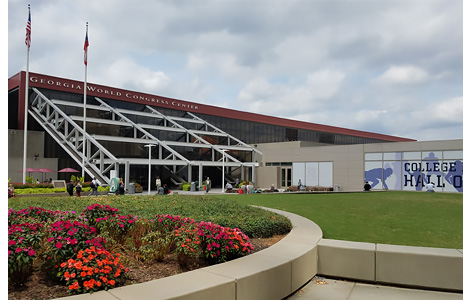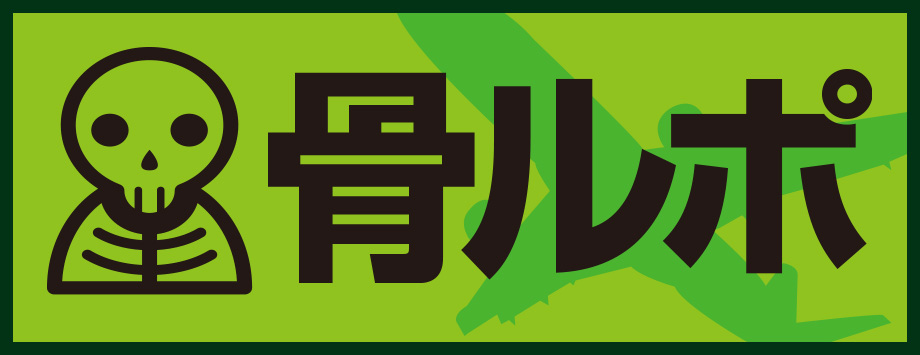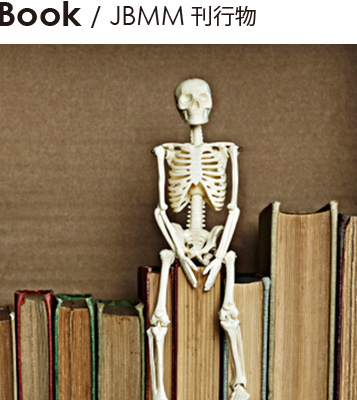
骨ルポ
ASBMR 2016 レポート
Denise Zujur(東京大学大学院工学系研究科バイオエンジニアリング専攻)

The content of the conferences was highly diverse, enough for getting insights of almost all fields of the bone research, as well as the latest trends in both the clinical and the basic contexts. As a PhD student and the first-time attendance to the ASBMR annual meeting, I also took advantage of the Meet the Professor Sessions in which I learned basic concepts in a more casual environment. In general, all sessions helped me think my research from a broader context, and understand what have been done and what are the challenges in the current bone field.
I also enjoyed presenting my research during the poster sessions and learning from related posters. It was especially insightful talking with other students and experienced researchers about bone science. Also, being in my last year of the PhD course, I found the ASBMR2016 gave me a great opportunity for expanding my connections with people from the academia, pharmaceutical and biotech industry from different countries. Overall the ASBMR annual meeting was an enriching experience, and I am definitely expecting to attend the next year.
Below I have selected two oral presentations that I attended and are closely related to my research. A summary and comments are provided.
紹介演題 [1]
FAK Promotes Osteoprogenitor Cell Proliferation and Differentiation by Enhancing Wnt Signaling
キーワード
Focal adhesions, osteoblasts, adipocytes
研究グループ
Chunhui Sun, Hebao Yuan, Xiaoxi Wei, Li Wang, Linford Williams, Paul Krebsbach, Jun-Lin Guan, Fei Liu.
- School of Life Science, Jiangsu Normal University.
- School of Dentistry, University of Michigan
サマリー&コメント
Focal adhesion kinase (FAK) has critical functions in survival, proliferation and differentiation of many cell types1; however, its role in skeletal development is not clear2. This research aimed to investigate whether FAK may regulate the function of the osteoblast lineage cells. To this end, FAK conditional knockout (CKO) mouse model in which FAK was deleted in osterix-expressing cells was used. CKO mice showed decreased bone mass comparing to wild type. In vitro culture of bone marrow stem cells (BMSCs) isolated from CKO showed compromised osteoblastogenesis and increased adipogenesis. Moreover, the β-catenin level as well as the level of phosphor-GSK3β was reduced in FAK deficient BMSCs suggesting that the deletion of FAK in BMSCs impairs Wnt signaling by down-regulating its effector β-catenin in early osteoblast lineage cells.
The data presented here, shows some cues about the molecular mechanisms that are accountable for negative correlation between bone mass and bone marrow adiposity, and also provides valuable evidence between the negative feedback between FAK deletion and osteoblast development. However, I think that further investigation of the proposed mechanism is needed. Investigating the effect of an activator of the Wnt signaling in FAK deficient osteopregenitors may provide a better understanding of the involvement of the Wnt signaling in bone decrease. On the other hand, it is well known that focal and fibrillar adhesions in vitro are fundamentally different from those encountered in vivo condition3, 4. In fact, it has been proposed that the focal adhesions observed in cells cultured in plates (2D) are exaggerated forms of the matrix adhesions, and the stress fibers associated with 2D focal adhesions are rarely observed in vivo. In this sense, using a three dimensional (3D) in vitro culture model may be more appropriated for discerning molecular pathways affected by FAK.
References
- 1. Parsons, J.T., Martin, K.H., Slack, J.K., Taylor, J.M. & Weed, S.A. Focal adhesion kinase: a regulator of focal adhesion dynamics and cell movement. Oncogene 19, 5606-5613 (2000).
- 2. Sun, C. et al. FAK Promotes Osteoblast Progenitor Cell Proliferation and Differentiation by Enhancing Wnt Signaling. J Bone Miner Res (2016).
- 3. Zamir, E. et al. Molecular diversity of cell-matrix adhesions. J Cell Sci 112 (Pt 11), 1655-1669 (1999).
- 4. Cukierman, E., Pankov, R., Stevens, D.R. & Yamada, K.M. Taking Cell-Matrix Adhesions to the Third Dimension. Science 294, 1708-1712 (2001).
紹介演題 [2]
Osteoblasts Mediate Immunosuppression During Sepsis by Regulating Lymphopoiesis
キーワード
Sepsis, Osteoblasts, Osteoimmunology
研究グループ
Asuka Terashima, Kazuo Okamoto, Tomoki Nakashima, Koichi Ikuta, Hiroshi Takayanagi
- Graduate School of Medicine and Faculty of Medicine, The University of Tokyo
サマリー&コメント
Accumulative evidence suggests that osteoblasts play a key role in the regulation of hematopoietic stem cells (HCSs) under both physiological and pathological conditions5, 6. However, the role of osteoblasts in the development of lymphoid lineage remains unclear. Here, the authors aimed to elucidate the function of the osteoblasts in the regulation of the immune cells under a septic condition using the cecal ligation and puncture mouse model. They found that sepsis induces marked bone loss through impaired osteoblastic bone formation affecting the lymphopoiesis through interleukin-mediated pathway; osteoblasts can regulate the number of common lymphoid progenitors during acute immune response through IL-7 production7.
The presented data robustly support the interaction between the immune and bones cells and highlight the potential application of these findings by showing amelioration of the sepsis-induced immunodeficiency by parathyroid hormone (PTH) administration in vivo, which is known for accelerating the osteoblastic bone formation8.
References
- 5. Morrison, S.J. & Scadden, D.T. The bone marrow niche for haematopoietic stem cells. Nature 505, 327-334 (2014).
- 6. Mercier, F.E., Ragu, C. & Scadden, D.T. The bone marrow at the crossroads of blood and immunity. Nat Rev Immunol 12, 49-60 (2011).
- 7. Terashima, A. et al. Sepsis-Induced Osteoblast Ablation Causes Immunodeficiency. Immunity 44, 1434-1443.
- 8. Martin, T.J. Bone Biology and Anabolic Therapies for Bone: Current Status and Future Prospects. J Bone Metab 21, 8-20 (2014).







